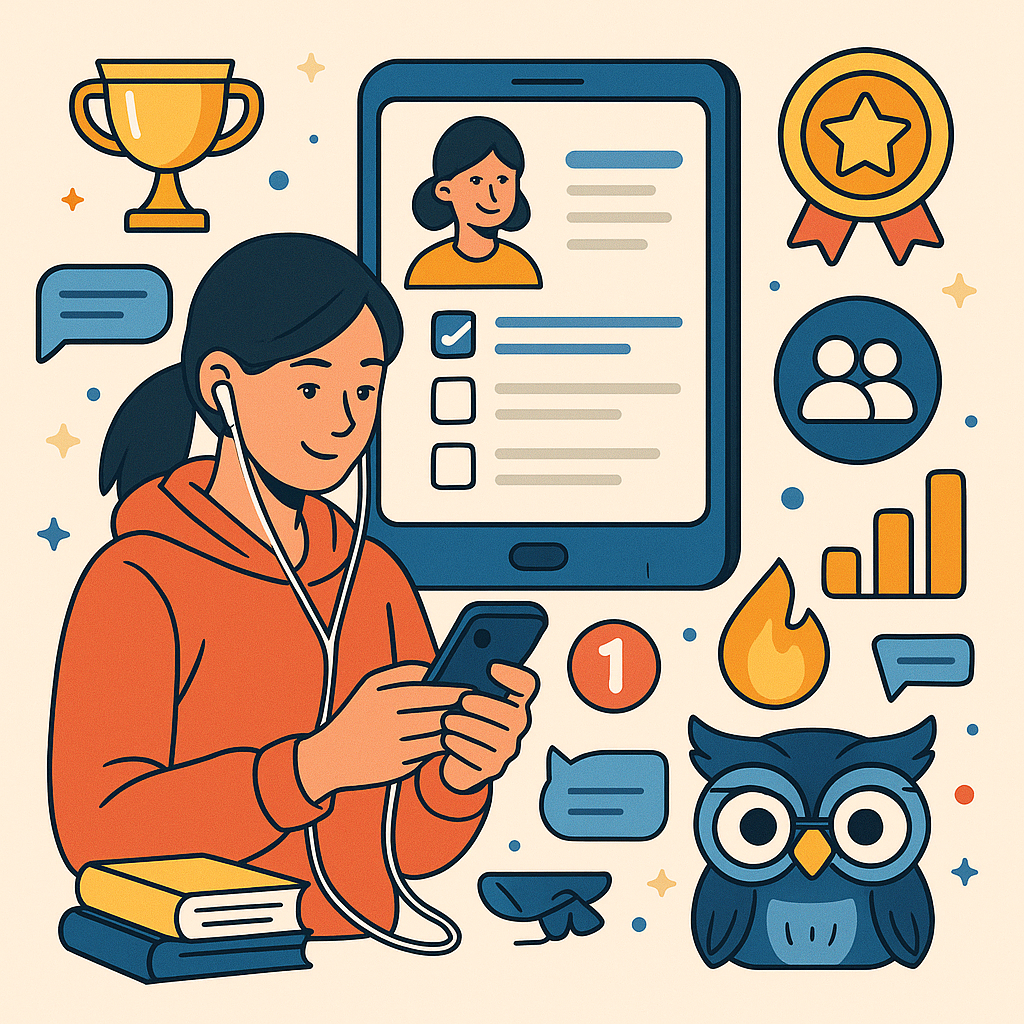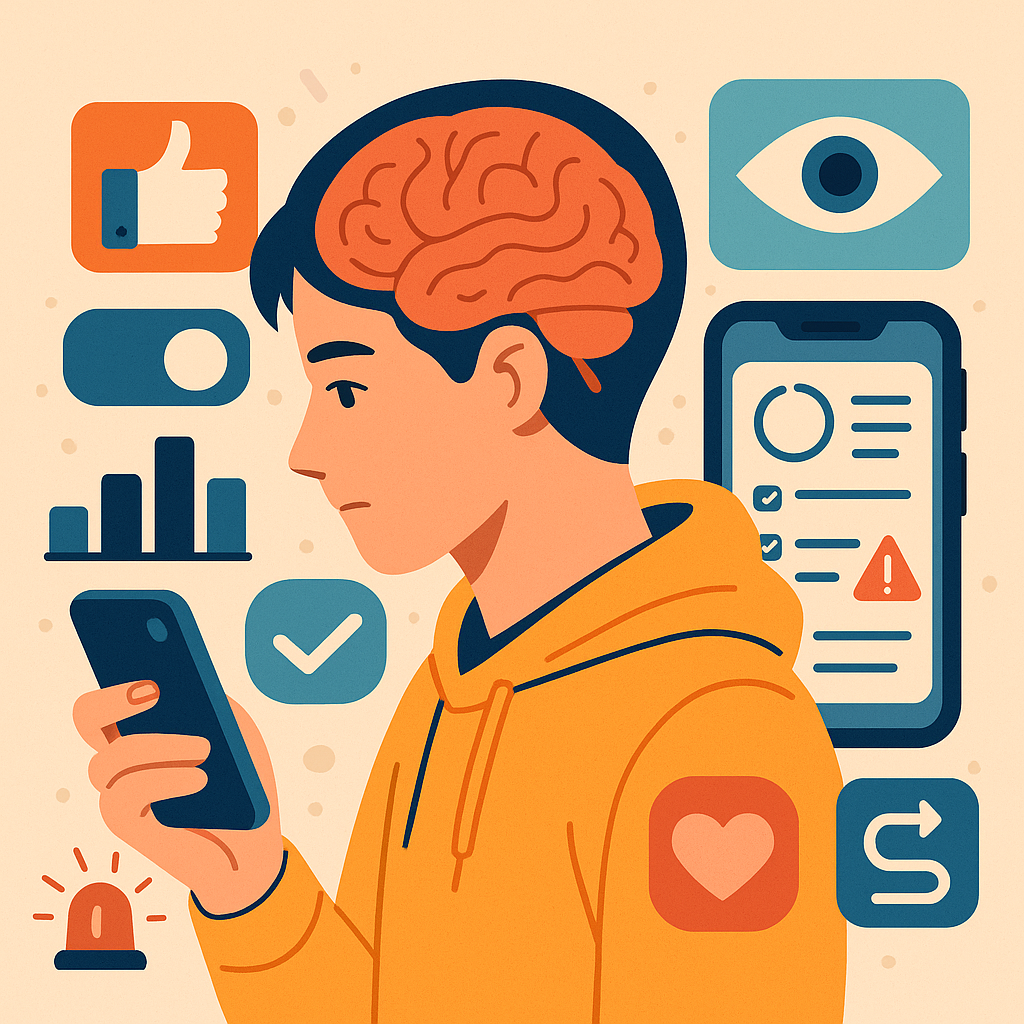Why do some people stay loyal to learning apps while others quit? In this article, we unpack the factors shaping learning apps retention, revealing what keeps users hooked—and why they throw in the towel.

1. Gamification: The Double‑Edged Sword
Gamified elements like points, streaks, and leaderboards are designed to boost learning apps retention—and they often do. Gamification taps into our need for achievement and feedback. In fact, around 67% of students report gamified lessons feel more motivating than conventional learning devlinpeck.com.
But this tactic has limits. After novelty wears off, it can distract or demotivate users. A study on gamified learning showed engagement dips after four weeks, only to rebound later. Worse, some users get so caught up in earning rewards that actual learning suffers—a phenomenon researchers call “gamification misuse”.
Key takeaway: Gamification must be thoughtfully designed. Balance is crucial—reward systems should align with meaningful educational progress, not just vanity metrics.
2. Personalization and Adaptive Learning
Users stay when apps feel “made for me.” Artificial intelligence allows apps to tailor lessons to fit individual pace and interests. In one study, personalized content increased app usage by 14% and stumbled content consumption by 60%. Adaptive learning, guided by AI, delivers only what users need—avoiding boredom or overwhelm—and increases learning apps retention .
Real-world impact: Apps like Babbel show how adaptive, daily micro lessons can significantly improve language skills . Letting users choose topics or difficulty empowers autonomy—one of the pillars of Self-Determination Theory.
3. AI-Powered Feedback: Promise and Peril
AI feedback, chatbots, and voice assistants have been lauded as tools to deepen engagement. Duolingo’s “Max” tier adds GPT-4‑powered conversations and explanations. The Verge also noted Duolingo’s use of AI avatars to bolster user interaction .
But some users say AI-generated exercises contain errors—especially in niche languages—or mispronounce words polygon.com. This can cause confusion, frustration, and dropouts.
Lesson: High-quality, reliable AI feedback is essential. Without fact-checking and human oversight, AI can lead to dissatisfaction and degrade learning apps retention.
4. Social Features & Community Engagement
Learning in isolation can feel tedious. Features like leaderboards, forums, or tandem chat build accountability and motivation. Self-Determination Theory highlights relatedness—the need to connect—as vital for long-term learning. Duolingo’s forums once offered peer explanations, but removing them in favor of AI sparked backlash .
Best practice: Blend social components without creating toxic competition. Encourage collaboration and peer support to foster persistence.
5. Real‑World Application vs. Idle Browsing
Users quit when content feels superficial or unhelpful. This often reflects a lack of meaningful experiences—like speaking with native speakers. Duolingo’s “Adventures” feature tries to solve this through AI-generated real-life scenarios .
Tip: Incorporate practical units with role-play, journaling, or real-time chat to make learning feel purposeful and relevant.
6. Consistency Over Time: Habit Formation
Retention isn’t just about short-term excitement—it’s about habit. Research shows 43% of learners drop out of language-learning apps within six months due to low motivation or perceived slow progress medium.com.
Consistency requires positive reinforcement: reminders, streaks, daily micro-goals. But over-reliance on streaks can cause burnout or guilt-driven quitting. Once users fall behind, they often give up entirely.
Balanced formula:
- Encourage daily check-ins
- Focus on progress milestones, not perfection
- Use adaptive pacing to prevent overwhelm
7. Emerging Trend: AR and Augmented Learning
Augmented Reality (AR) is poised to add real-world context to learning. AR vocab tools, image overlays, and interactive environments enhance immersion and retention . Early evidence suggests these dynamic experiences boost academic performance and engagement.
As AR becomes more accessible, expect language apps to adopt pop-up translations, conversational scenarios, or virtual tutors embedded in real environments.
Why Users Quit: Summing It Up
- Extrinsic fatigue: Over-reliance on points or badges leads to burnout
- Inaccurate AI: Broken pronunciation or errors especially discourage learners
- Low relevance: Lessons that don’t transfer to real-world fluency feel pointless
- Broken habits: Streak loss or motivation depletion often ends engagement
Best Practices for App Designers & Educators
- Blend gamification with deep learning: Use points/trophies to reinforce knowledge—not distract from it.
- Invest in quality AI: Use advanced models but ensure human oversight, especially for pronunciation and grammar.
- Personalize learning paths: Adapt content to learners’ goals, pace, and interests.
- Foster community: Include forums, peer chats, or local meetups for social motivation.
- Incorporate real scenarios: Use role-play, AR, or practical tasks to tie learning to real-world use.
- Support habit formation: Promote achievable goals and gentle reminders over guilt-triggering streaks.
Conclusion
User loyalty to learning apps hinges on four main pillars: meaningful gamification, reliable AI, deep personalization, and real-world relevance. As technology evolves—through AR, improved AI, and richer social integration—the best apps prioritizing these factors will create long-lasting learning journeys.
By addressing the pitfalls—like reward fatigue, inaccurate feedback, or empty habits—designers can improve learning apps retention for a more engaged, enduring audience.
References
- Darad, K. Gamification In Learning: Enhancing Engagement And Retention In 2025, eLearning Industry, Feb 2025.
- Rodrigues, L. et al., “Gamification suffers from the novelty effect but benefits from the familiarisation effect,” Intl. J. of EdTech in Higher Ed, Dec 2022.
- Agrawal, K. et al., “Personalized Recommendations in EdTech,” arXiv, Aug 2022.
- Loewen, S. et al., “The effectiveness of app‑based language instruction,” Second Language Studies, 2020.
- Deci, E. & Ryan, R. Self‑Determination Theory and Intrinsic Motivation, American Psychologist, 2000.






